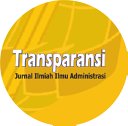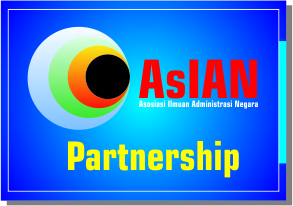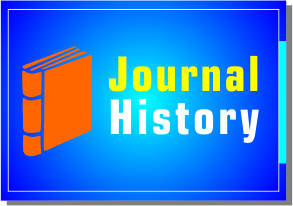Analisis Stakeholder dalam Pengembangan Wisata Alam Kea-Kea Mangolo di Kabupaten Kolaka
DOI:
https://doi.org/10.31334/transparansi.v6i2.3442Keywords:
stakeholders, tourism, tourism developmentAbstract
Stakeholder involvement in tourism development is important in overcoming the limited resources of each actor. Kea-Kea natural tourist attraction in Mangolo Village, Latambaga Sub-district is one of the tourist attractions whose development involves various stakeholders. The purpose of this research is to identify stakeholders and the role of stakeholders involved and the development of Kea-Kea natural attractions. The method used in the research is descriptive qualitative. The results of the study found that the actors involved in the development of tourism objects consisted of the Kolaka Regency Tourism Office and the Natural Resources Conservation Centre (BKSDA) of Southeast Sulawesi Province which were key stakeholders. Then the tourism awareness group (Pokdarwis), companies (business sector), and the community. Pokdarwis is a primary stakeholder while companies and the community are secondary stakeholders. The role of each stakeholder is very strategic in the development of tourism objects. The government and BKSDA play a role in preparing road infrastructure, marketing (promotion), and preserving the nature of tourist attractions. The business sector is involved in providing facilities and infrastructure services. Pokdarwis play a role in maintaining cleanliness, maintaining and repairing supporting facilities for tourist attraction locations, and collecting retribution. However, the contribution of stakeholders in the development of tourism objects has not been maximized due to budget constraints, and lack of stakeholder awareness of the importance of tourism development.References
Destiana R, Kismartini K, Yuningsih T. Analisis Peran Stakeholders Dalam Pengembangan Destinasi Pariwisata Halal Di Pulau Penyengat Provinsi Kepulauan Riau. J Ilmu Adm Negara ASIAN (Asosiasi Ilmuwan Adm Negara). 2020;8(2):132-153. doi:10.47828/jianaasian.v8i2.18
(2). Purba GP, Yuniningsih T, Dwimawanti IH. Model Jaringan Aktor Dalam Pengembangan Pariwisata Desa Wisata Wonolopo Kecamatan Mijen Kota Semarang. J Public Policy Manag Rev. 2012;10(2):209-183.
(3). Redyanto F, Salahudin S, Salviana V. Model Kerjasama Antar Stakeholders Dalam Pengembangan Wisata Budaya Dusun Sejo Kabupaten Pasuruan. LOGOS (Journal Local Gov Issues). Published online 2018:1-24.
(4). Simanjorang F, Hakim L, Sunarti S. Peran Stakeholder Dalam Pembangunan Pariwisata Di Pulau Samosir. Profit. 2020;14(01):42-52. doi:10.21776/ub.profit.2020.014.01.5
(5). Ariyani N, Fauzi A, Umar F. Model hubungan aktor pemangku kepentingan dalam pengembangan potensi pariwisata Kedung Ombo. J Ekon dan Bisnis. 2020;23(2):357-378. doi:10.24914/jeb.v23i2.3420
(6). Amoako GK, Obuobisa-Darko T, Ohene Marfo S. Stakeholder role in tourism sustainability: the case of Kwame Nkrumah Mausoleum and centre for art and culture in Ghana. Int Hosp Rev. 2022;36(1):25-44. doi:10.1108/ihr-09-2020-0057
(7). Mahrizi A, Khalfan AS. The role of stakeholder participation in tourism planning in Oman. 2021;(March). http://theses.ncl.ac.uk/jspui/handle/10443/5385%0Ahttps://theses.ncl.ac.uk/jspui/bitstream/10443/5385/1/Al Mahrizi A S K 2021.pdf
(8). Risteska BP. Stakeholders in Sustainable Tourism Development. TISC-Tourism Int Sci Conf. Published online 2019. http://www.tisc.rs/proceedings/index.php/hitmc/article/view/298
(9). Habtamu Bekana K. Stakeholders’ Involvement in Tourism Development for Poverty Alleviation: The Case of Suba Forest, Ethiopia. Int J Sci Qual Anal. 2023;(June). doi:10.11648/j.ijsqa.20230901.12
(10). Halibas AS, Sibayan RO, Maata RLR. The penta helix model of innovation in Oman: An hei perspective. Interdiscip J Information, Knowledge, Manag. 2017;12:159-172.
Downloads
Published
Issue
Section
License

This work is licensed under a Creative Commons Attribution-ShareAlike 4.0 International License
Please find the rights and licenses in Transparansi : Jurnal Ilmiah Ilmu Administrasi By submitting the article/manuscript of the article, the author(s) agree with this policy. No specific document sign-off is required.
- License
The commercial use of the article will be governed by the Creative Commons Attribution license as currently displayed on Creative Commons Attribution-ShareAlike 4.0 International License.
2. Author(s)' Warranties
The author warrants that the article is original, written by stated author(s), has not been published before, contains no unlawful statements, does not infringe the rights of others, is subject to copyright that is vested exclusively in the author and free of any third party rights, and that any necessary written permissions to quote from other sources have been obtained by the author(s).
3. User Rights
Transparansi : Jurnal Ilmiah Ilmu Administrasi spirit is to disseminate articles published are as free as possible. Under the Creative Commons license, Transparansi : Jurnal Ilmiah Ilmu Administrasi permits users to copy, distribute, display, and perform the work for non-commercial purposes only. Users will also need to attribute authors and Transparansi : Jurnal Ilmiah Ilmu Administrasi on distributing works in the journal and other media of publications.
4. Co-Authorship
If the article was jointly prepared by more than one author, any authors submitting the manuscript warrants that he/she has been authorized by all co-authors to be agreed on this copyright and license notice (agreement) on their behalf, and agrees to inform his/her co-authors of the terms of this policy. Transparansi : Jurnal Ilmiah Ilmu Administrasi will not be held liable for anything that may arise due to the author(s) internal dispute. Transparansi : Jurnal Ilmiah Ilmu Administrasi will only communicate with the corresponding author.
5. Miscellaneous
Transparansi : Jurnal Ilmiah Ilmu Administrasi will publish the article (or have it published) in the journal if the article’s editorial process is successfully completed. Transparansi : Jurnal Ilmiah Ilmu Administrasi editors may modify the article to a style of punctuation, spelling, capitalization, referencing and usage that deems appropriate. The author acknowledges that the article may be published so that it will be publicly accessible and such access will be free of charge for the readers as mentioned in point 3.
Every accepted manuscript should be accompanied by "Copyright Transfer Agreement"prior to the article publication.











